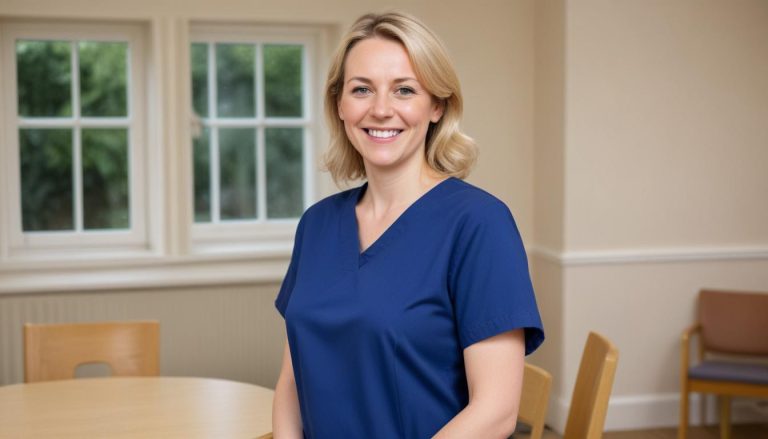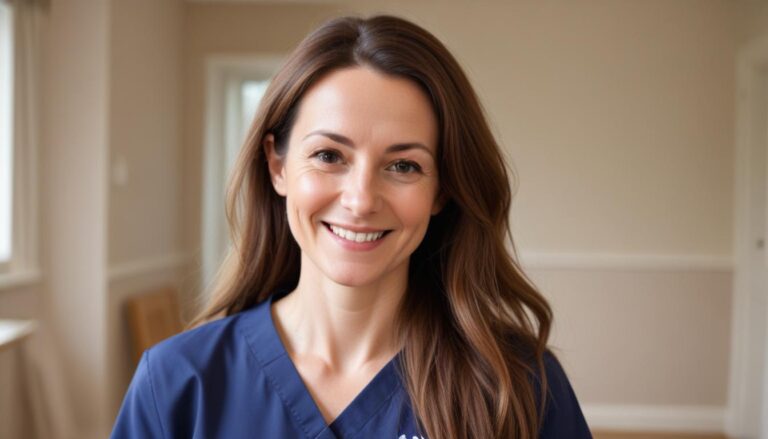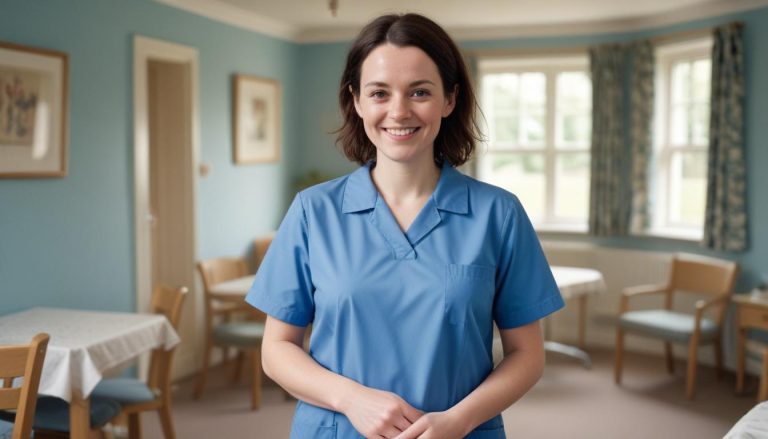High-Tech AAC stands for high-tech Augmentative and Alternative Communication. It refers to the use of advanced technology to help individuals who struggle with speech or language. This can include people with physical disabilities, neurological conditions, or developmental delays. In health and social care, High-Tech AAC plays an important role in supporting communication for those who cannot rely on natural speech.
Examples of High-Tech AAC devices include speech-generating devices, specialised tablets, and communication apps. These tools give people the ability to express themselves and interact with others.
What is AAC?
Augmentative and Alternative Communication (AAC) describes all methods used to assist communication when speech is impaired. High-Tech AAC is one type, supported by digital or electronic equipment. It contrasts with low-tech AAC, which involves tools like picture boards or alphabet charts.
The goal of AAC is not to replace natural speech but to support communication. In many cases, AAC can work alongside a person’s existing abilities. Health and social care professionals often recommend these tools as part of a care plan to help individuals live more independent and fulfilling lives.
How High-Tech AAC Works
High-Tech AAC relies on electronic systems. These systems process input—like touch, eye gaze, or switches—and output communication in different formats. For example, a speech-generating device might produce spoken words when the user selects symbols on a screen.
Some devices are standalone, while others are apps that can be installed on standard smartphones or tablets. High-Tech AAC tools are customisable, meaning they can be tailored to meet each user’s specific needs. This might include adding vocabulary, changing the voice output, or integrating with other assistive devices.
Examples of High-Tech AAC Tools
There are many types of High-Tech AAC tools available, including the following:
- Speech-Generating Devices (SGDs): These are portable devices programmed to produce speech. Users select input options such as text, pictures, or symbols to communicate.
- Specialist Apps: Apps like Proloquo2Go or TouchChat can turn an ordinary tablet or smartphone into a communication device. These apps offer features like customisable vocabularies and voice options.
- Eye-Tracking Systems: These allow users to control a device with their eye movements. This is especially useful for individuals with limited motor control, such as people with motor neurone disease (MND).
- Head-Mouse Systems: These work for people who cannot use their hands. A sensor worn on the head allows them to interact with the screen.
- Switch Control Systems: Designed for individuals with severe physical limitations, these systems let users operate a device using single or multiple switches, such as pressing with a finger or flexing a muscle.
Advantages of High-Tech AAC in Health and Social Care
High-Tech AAC offers numerous benefits for health and social care, including the following:
- Improved Communication: It allows people to share their thoughts, needs, and feelings. This can boost self-esteem and reduce frustration.
- Increased Independence: Users can express themselves without needing a caregiver to interpret for them. This leads to greater autonomy in day-to-day life.
- Collaborative Use: Family members, carers, and health professionals can all use the AAC device to enhance interaction. This improves relationships and ensures that the user’s needs are understood.
- Enhanced Access to Education and Employment: AAC tools can help people engage more fully in school, work, or social environments.
- Customisation for Individuals: Devices can be set up to suit different cognitive abilities, motor skills, and communication preferences.
Who Benefits from High-Tech AAC?
High-Tech AAC tools can help many people with diverse needs. These include:
- Children with Developmental Delays: Children with conditions such as autism spectrum disorder or cerebral palsy often use High-Tech AAC to develop language skills.
- Adults with Neurological Conditions: People with ALS, Parkinson’s disease, or stroke may lose the ability to speak over time. AAC tools help them maintain communication.
- Temporary Communication Challenges: Injuries or surgeries, such as those affecting the vocal cords, might result in short-term need for AAC devices.
- People with Learning Disabilities: Those who find verbal communication difficult can find an alternative way to connect using AAC tools.
Trained health and social care professionals assess each person’s needs to determine if High-Tech AAC might help. This includes speech and language therapists and occupational therapists.
Issues Associated with High-Tech AAC
High-Tech AAC is incredibly useful, but it does come with challenges:
- Cost: Devices and software can be expensive. Funding through the NHS, charities, or education services may be required.
- Training: Users, families, and carers need training to use the systems effectively. This takes time and support.
- Accessibility: Some tools may not be suitable for people with very limited motor function. Other options, like switches or eye-gaze devices, might be required.
- Technology Issues: Tech failures, battery life, and software glitches can interrupt communication.
Health and social care teams play an important role in addressing these challenges. They ensure users receive the support and training needed to succeed with High-Tech AAC.
The Role of Speech and Language Therapists
Speech and language therapists (SLTs) are essential in introducing High-Tech AAC. They assess an individual’s communication ability to decide which tool might be most suitable. They also train users and carers.
SLTs typically collaborate with other professionals, such as occupational therapists and assistive technology specialists, to create a personalised communication plan.
The Legal Framework in the UK
The UK has a legal framework ensuring access to communication aids where needed. The Children and Families Act 2014 outlines the requirement for schools to support children with special educational needs. Similarly, the Equality Act 2010 highlights the right to reasonable adjustments for people with disabilities.
In the NHS, High-Tech AAC is often funded through communication aid services. This ensures equality for individuals who need these devices but cannot afford them privately.
Using High-Tech AAC in Everyday Life
High-Tech AAC can be used in a wide range of settings:
- At Home: People use AAC devices to interact with family members or phone contacts. Devices may also integrate with smart home systems.
- In Education: Schools often embed AAC tools into lessons to support inclusive learning.
- In Healthcare: Hospitals and clinics can accommodate AAC users by providing compatible systems to communicate with staff.
- Social Activities: AAC allows users to take part in group activities or hobbies, helping to reduce isolation.
Barriers to High-Tech AAC Use
Several barriers can prevent successful use of High-Tech AAC in health and social care:
- Stigma: People using visible AAC devices may encounter negative attitudes. Education and awareness campaigns help reduce this.
- Low Awareness: Some people remain unaware of AAC options. Health and social care professionals have a role in identifying and referring individuals who could benefit.
- Limited Resources: Access to technology or qualified therapists can be an issue in some areas.
Addressing these barriers requires ongoing efforts from individuals, organisations, and care networks.
The Future of High-Tech AAC
High-Tech AAC continues to evolve. Innovations include voice banking for people who anticipate speech loss. This allows individuals to preserve their natural voice before losing it.
Advances in artificial intelligence are also making AAC devices smarter. Predictive text and personalised communication apps are making interaction faster and easier.
Collaboration between health professionals, caregivers, and tech developers is leading to improved designs. These focus on user-friendly systems, affordable pricing, and broader access.
Final Thoughts
High-Tech AAC is a valuable tool in health and social care. It provides people with communication difficulties a way to express themselves and connect with others.
The technology has transformed communication for thousands. It brings independence and dignity to those who might otherwise struggle to be heard.
By overcoming challenges like cost, training, and accessibility, we can make the benefits of High-Tech AAC available to all who need it.
Subscribe to Newsletter
Get the latest news and updates from Care Learning and be first to know about our free courses when they launch.
Free Communication Skills Training Course
Start a free course with Care Learning today. Certified training with interactive elements, videos and mobile friendly.







